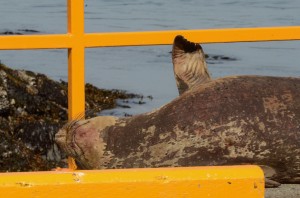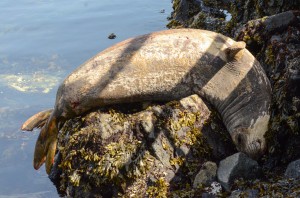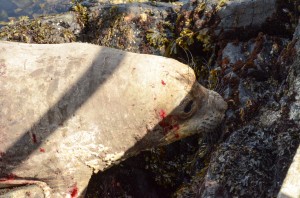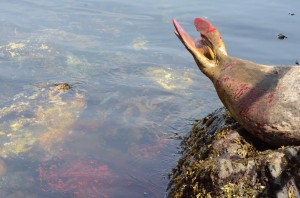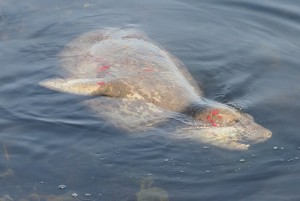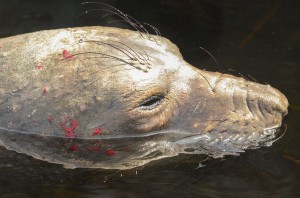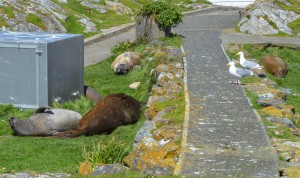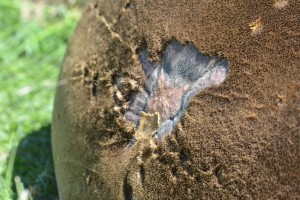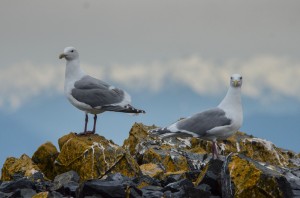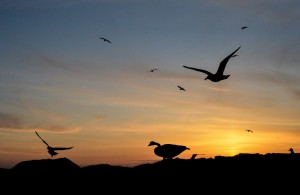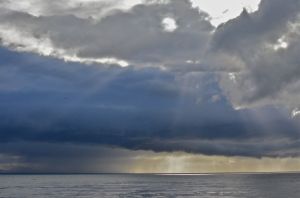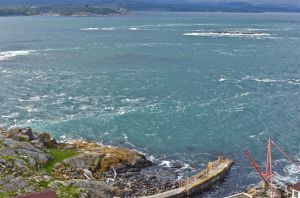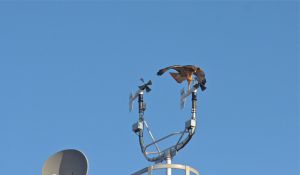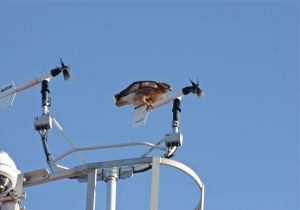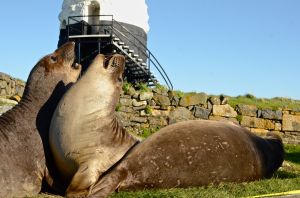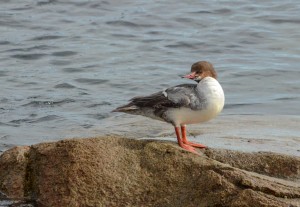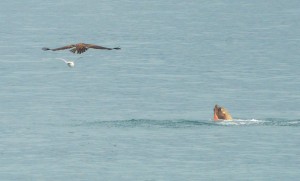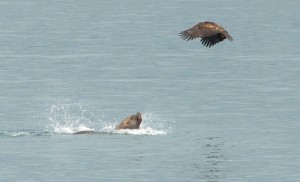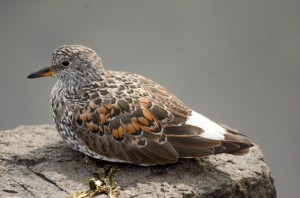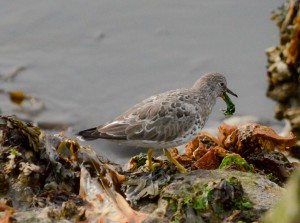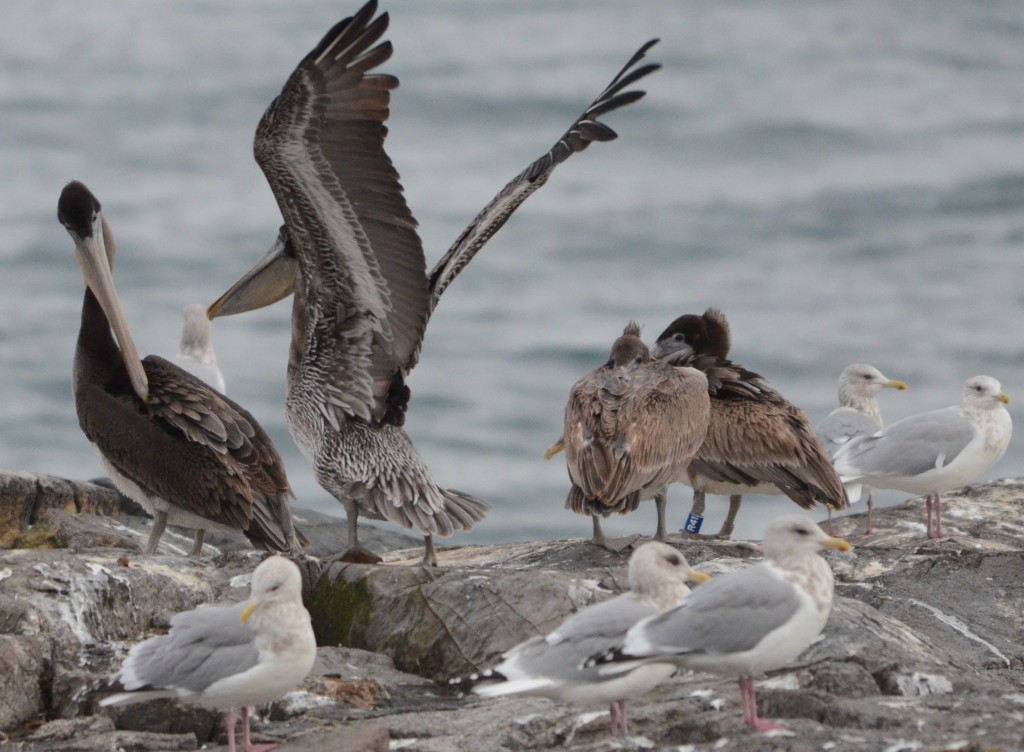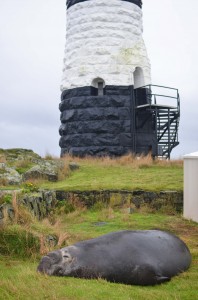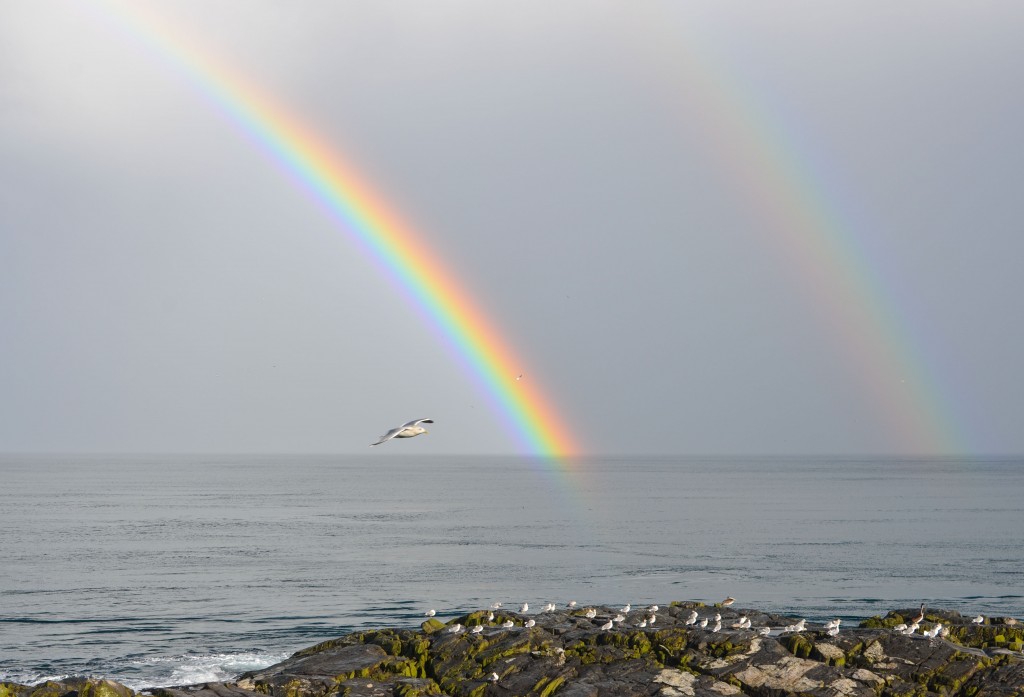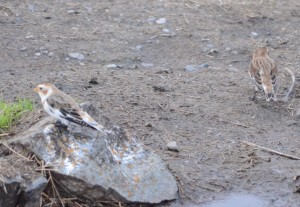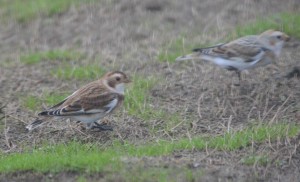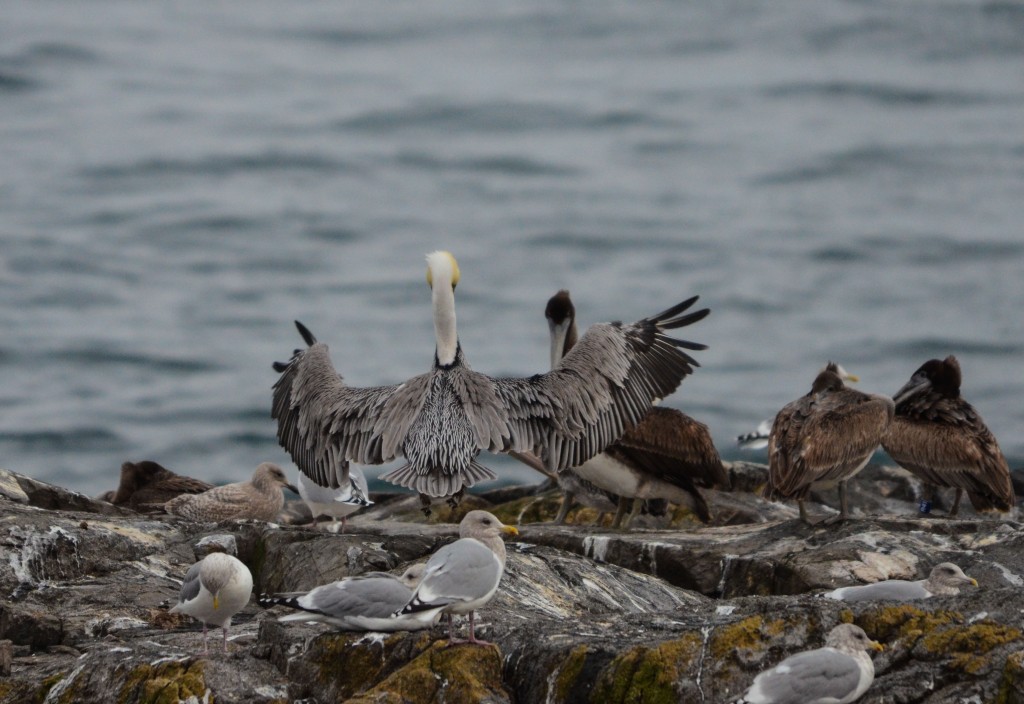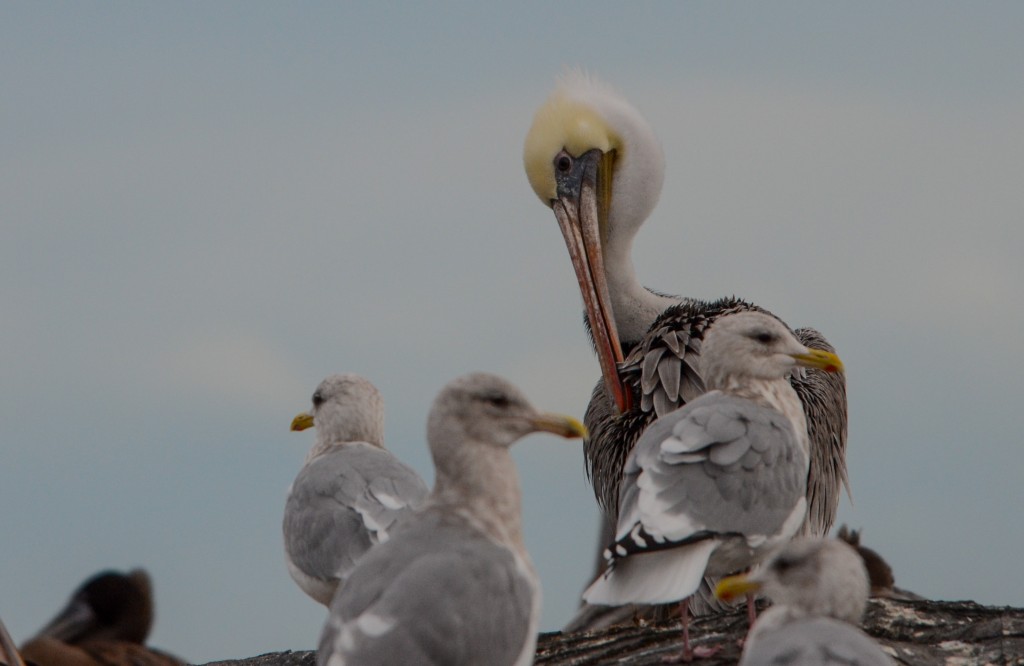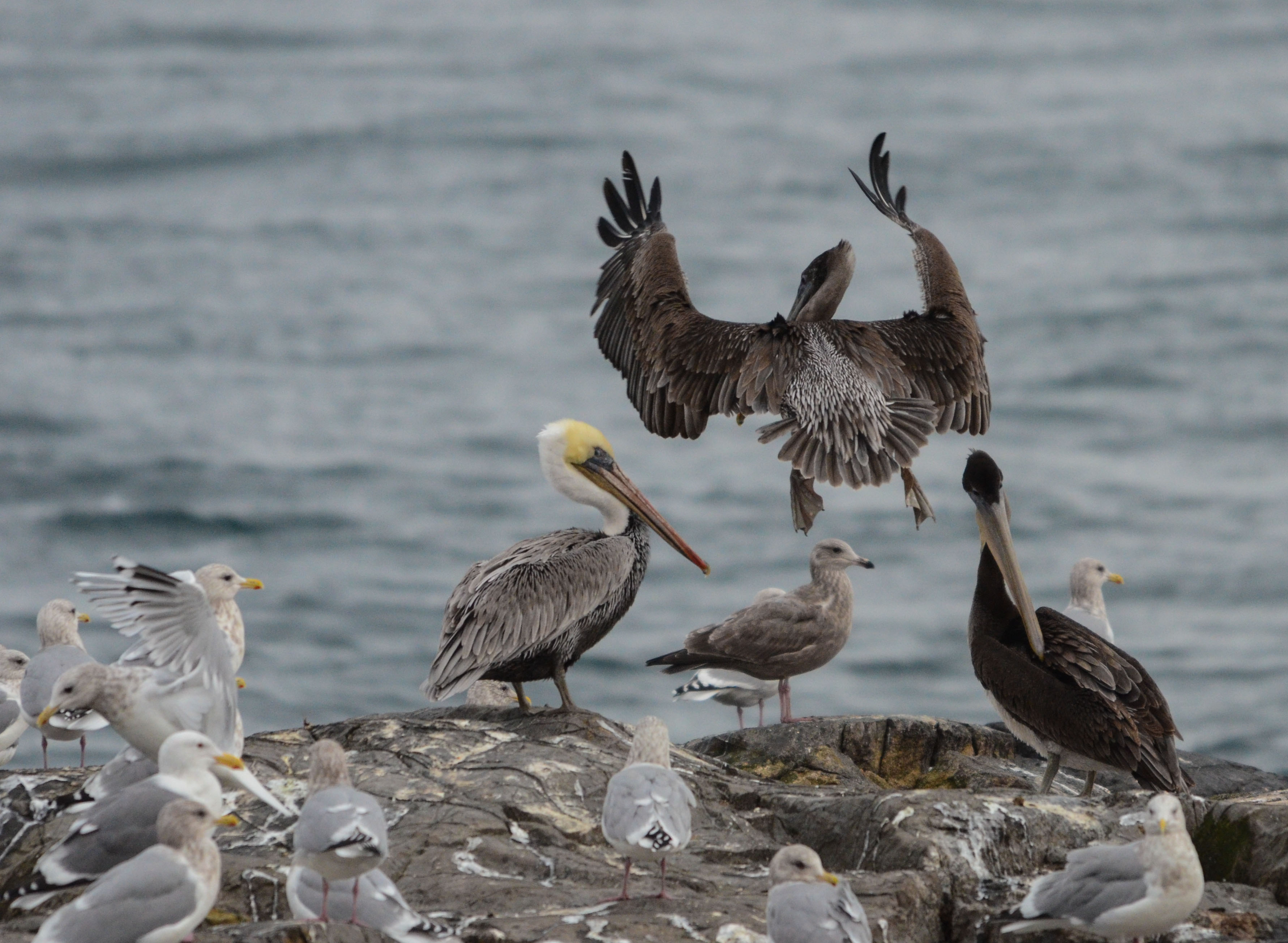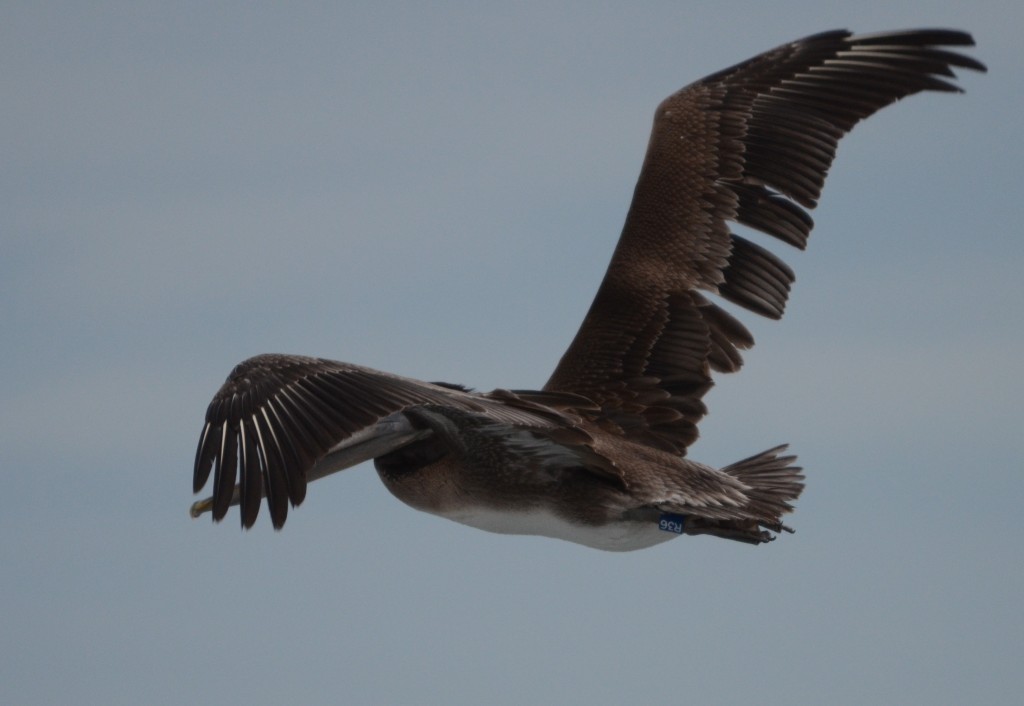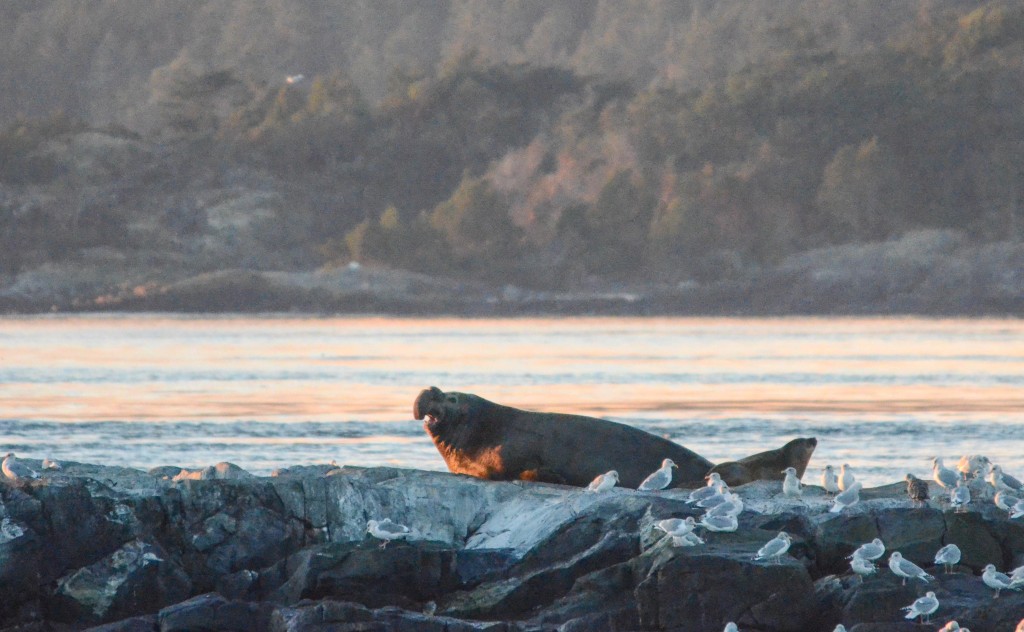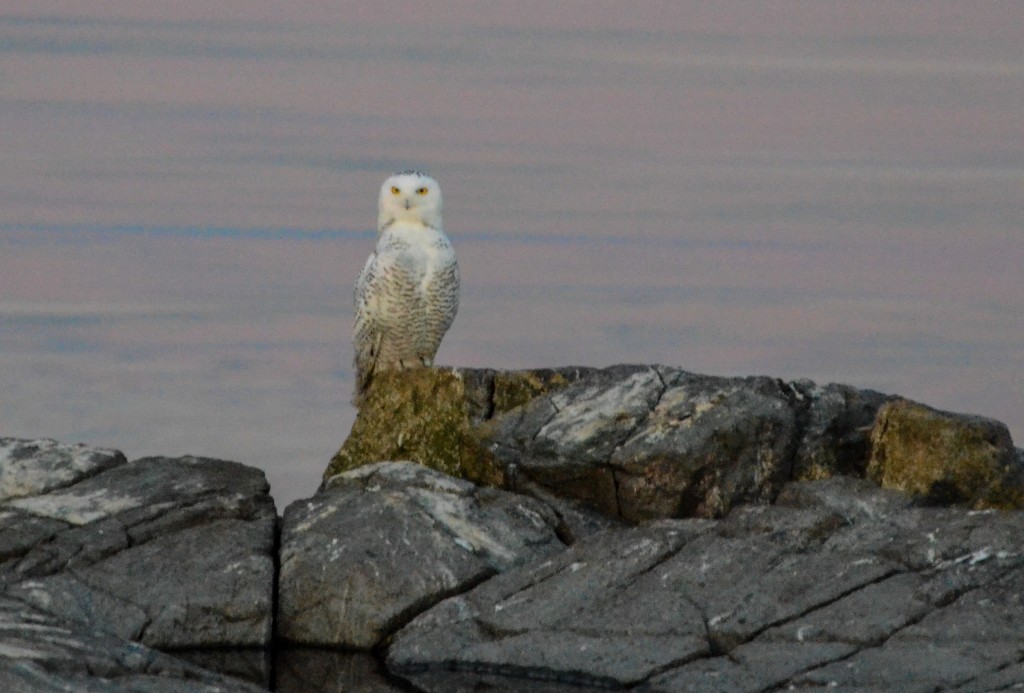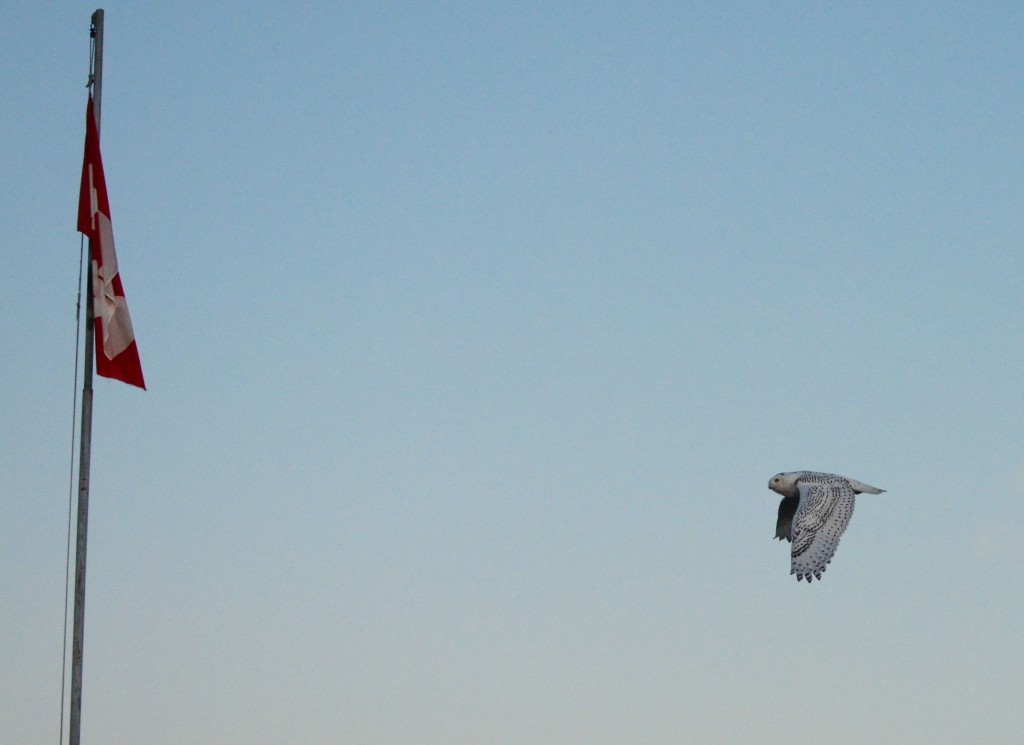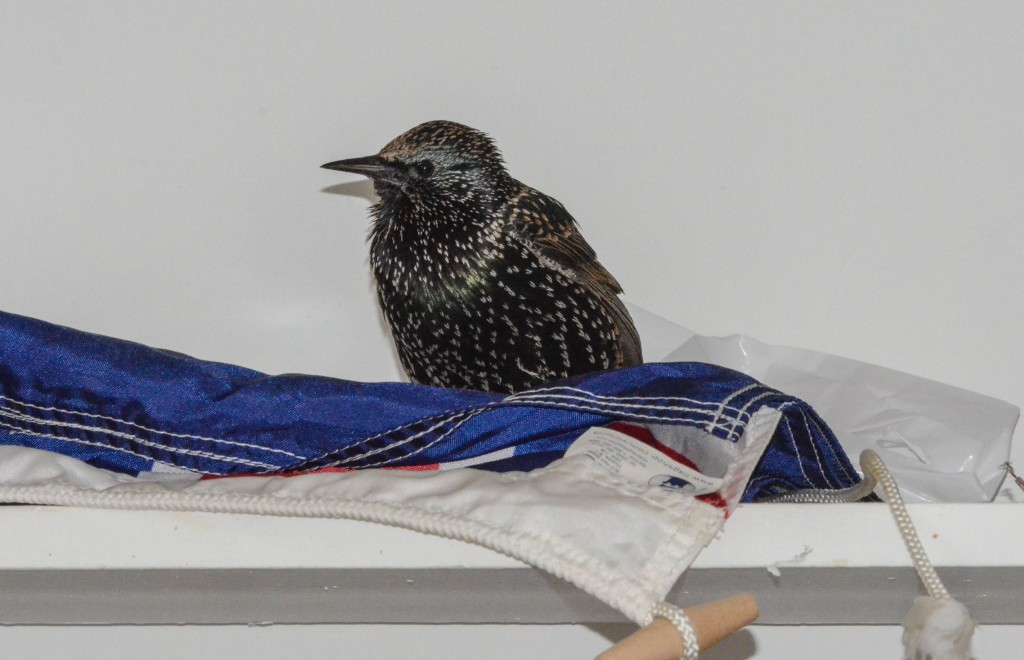Update: The young e-seal seems to be doing well. I was just in the water clearing kelp from near the jetty and was able to observe it closely. Elephant seals are extremely tough and resilient; its abrasions are almost fully healed already! The one change in its behaviour I have noticed is a reluctance to come ashore. He has spent the last 48 hours in the shallow water at the foor of the boat ramp.
Animals have accidents just like we do. I happened to witness a tumble this morning when a lounging juvenile elephant seal lost its bearings and fell from the jetty. I was trying to photograph pigeon guillemots, sitting on the rocks across from the seal. When I saw it tumble I ran over and at first glance thought it was dead. It was stuck pretty good and having a tough time rolling over. After 30 seconds of struggle I used my boot to help steady it until it could roll over… I am sure it would have made it on its own but I couldn’t watch it suffer in the position it was in, and it was clearly in some distress. I normally let nature’s dramas play out on their own but the jetty is a man-made object and contributed to the seal’s predicament…. At the moment the unhappy little tyke is recovering in the water and looks like it will be OK, but it has to be hurting. I’ll monitor its recovery. Here are the pictures:

